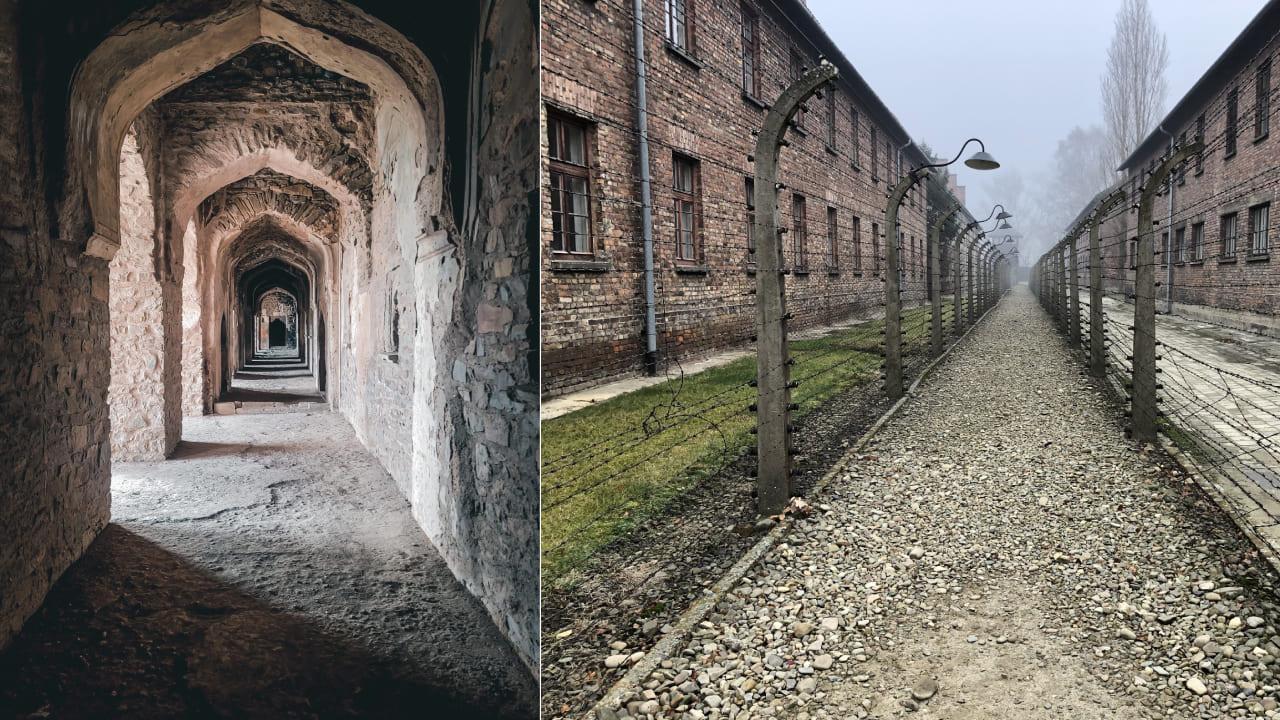Updated on: 08 December, 2024 08:15 PM IST |Shweta Shah

Of late, the term "dark tourism" is buzzing all over the internet, which is attracting both millennials and Gen Z alike. Dark tourism involves places that are historically associated with heart-wrenching and terrifying tragedies or deaths. This type of tourism gives a deeper understanding of history and a glimpse into the victims sufferings. Here are five places around the world with dark pasts that you can visit.

1. Auschwitz Concentration Camps, Poland
Established in 1940, Auschwitz is infamously known as the largest death camp in the history of the world. The camp witnessed horrors and sufferings of the Jews at the hands of Nazis and still holds historical significance even today.It unfortunately stands as the symbol of torture, suffering, and ruthless deaths of innocents. Every year, the place attracts over 250,000 tourists to this site, which is now turned into a museum.

2. Bhangarh Fort, Rajasthan
Nestled in Rajasthan's Alwar district, Bhangarh is a 16th-century fort built as the residence of Prince Madho Singh. The fort is officially announced as one of the most haunted places by the archaeological department of India.Many legends are associated with the fort, which forces it to be closed for the tourists and locals by sunset. Once a thriving town in itself, the place can be seen destroyed and barren and is believed to be haunted by spirits.

3. Lambi Dehar Mines, Mussoorie
Situated in the cosy and cold town of Mussoorie, these mines were once fully functional with hundreds of workers working in them. However, due to lack of precautions, many accidents occurred, and many mine workers died inside the premises.Anyone who dares to step inside the Lambi Dehar Mines can hear strange noises and ear-splitting screams coming from nowhere, which makes it eerie and dark.

4. Jallianwala Bagh, Amritsar
Jallianwala Bagh is a public park that hides one of the darkest chapters in Indian history. It witnessed the infamous Jallianwala Bagh massacre on April 13, 1919.Under the oppressive British colonial rule, a troop led by General Reginald Dyer mercilessly fired upon unarmed Indian protestors and patriots, resulting in the deaths of hundreds of innocents. While some died of harsh bullets, others killed themselves by jumping into the well located in the centre of the garden.
While the government has renovated it into a fancy park, the bullet marks and the well is still highlighted for every tourist visiting.

5. Hiroshima Peace Memorial, Japan
The Hiroshima Peace Memorial stands as the sole structure standing in the area where the first atomic bomb exploded on August 6, 1945.The iconic landmark serves as a stark symbol of the most destructive force ever created by humanity while also signifying hope and peace for the world and an ultimate goal of ending nuclear war around the globe.














